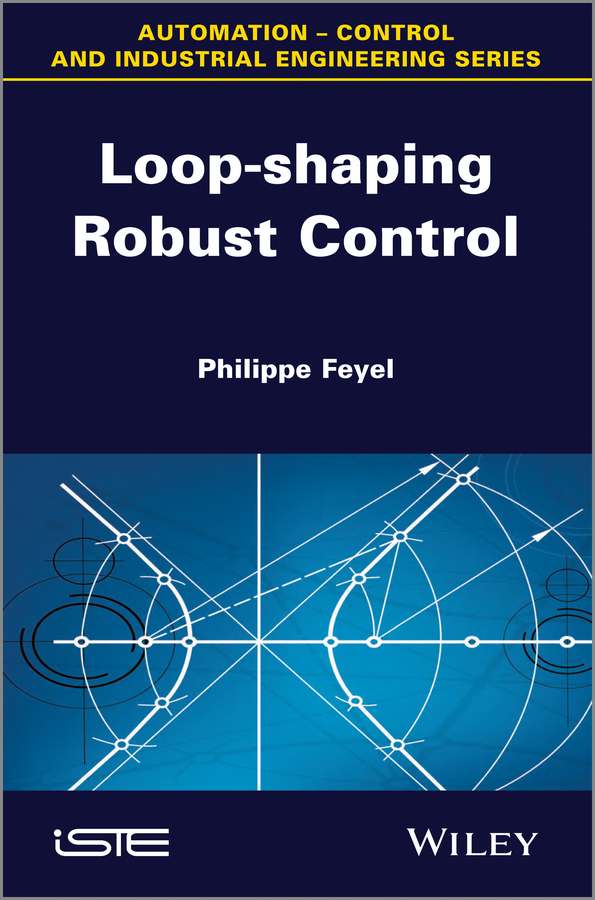Электронная книга: Philippe Feyel «Loop-shaping Robust Control»

|
The loop-shaping approach consists of obtaining a specification in relation to the open loop of the control from specifications regarding various closed loop transfers, because it is easier to work on a single transfer (in addition to the open loop) than on a multitude of transfers (various loopings such as set point/error, disturbance/error, disturbance/control, etc.). The simplicity and flexibility of the approach make it very well adapted to the industrial context. This book presents the loop-shaping approach in its entirety, starting with the declension of high-level specifications into a loop-shaping specification. It then shows how it is possible to fully integrate this approach for the calculation of robust and efficient correctors with the help of existing techniques, which have already been industrially tried and tested, such as H-infinity synthesis. The concept of a gap metric (or distance between models) is also presented along with its connection with the prime factors of a set of systems shaping a ball of models, as well as its connections with robust synthesis by loop-shaping, in order to calculate efficient and robust correctors. As H-infinity loop-shaping is often demanding in terms of the order of correctors, the author also looks at loop-shaping synthesis under an ordering constraint. Two further promising lines of research are presented, one using stochastic optimization, and the other non-smooth optimization. Finally, the book introduces the concept of correction with two degrees of freedom via the formalism of prime factorization. Avenues for future work are also opened up by the author as he discusses the main drawbacks to loop-shaping synthesis, and how these issues can be solved using modern optimization techniques in an increasingly competitive industrial context, in accordance with ever more complex sets of functional specifications, associated with increasingly broad conditions of usage. Contents Introduction 1. The Loop-shaping Approach 2. Loop-shaping H-infinity Synthesis 3. Two Degrees-of-Freedom Controllers 4. Extensions and Optimizations Appendix 1. Demonstrative Elements on the Optimization of Robust Stabilization with Order Constraint Appendix 2. Establishment of Real LMIs for the Quasi-Convex Problem of Optimization of the Weighting Functions About the Authors Philippe Feyel is an R&D Engineer for the high-tech company Sagem Défense Sécurité, part of the defence and security business of the SAFRAN group, in Paris, France. Издательство: "John Wiley&Sons Limited"
ISBN: 9781118574898 электронная книга Купить за 10269.66 руб и скачать на Litres |
Другие книги автора:
| Книга | Описание | Год | Цена | Тип книги |
|---|---|---|---|---|
| Robust Control Optimization with Metaheuristics | In the automotive industry, a Control Engineer must design a unique control law that is then tested and validated on a single prototype with a level of reliability high enough to to meet a number of… — John Wiley&Sons Limited, электронная книга Подробнее... | электронная книга |
См. также в других словарях:
Robust control — is a branch of control theory that explicitly deals with uncertainty in its approach to controller design. Controllers designed using robust control methods tend to be able to cope with small differences between the true system and the nominal… … Wikipedia
H-infinity loop-shaping — is a design methodology in modern control theory. It combines the traditional intuition of classical control methods with H infinity optimization techniques to achieve controllers whose stability and performance properties hold good in spite of… … Wikipedia
Control theory — For control theory in psychology and sociology, see control theory (sociology) and Perceptual Control Theory. The concept of the feedback loop to control the dynamic behavior of the system: this is negative feedback, because the sensed value is… … Wikipedia
H-infinity methods in control theory — H ∞ (i.e. H infinity ) methods are used in control theory to synthesize controllers achieving robust performance or stabilization. To use H ∞ methods, a control designer expresses the control problem as a mathematical optimization problem and… … Wikipedia
Quantitative feedback theory — (QFT), developed by Isaac Horowitz (Horowitz, 1963; Horowitz and Sidi, 1972), is a frequency domain technique utilising the Nichols chart (NC) in order to achieve a desired robust design over a specified region of plant uncertainty. Desired time… … Wikipedia
literature — /lit euhr euh cheuhr, choor , li treuh /, n. 1. writings in which expression and form, in connection with ideas of permanent and universal interest, are characteristic or essential features, as poetry, novels, history, biography, and essays. 2.… … Universalium
